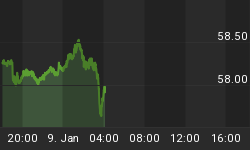Federal Reserve Chairman Alan Greenspan and company have held true to form, Credit expansion continues to exceed through excess.
2004 has been a busy year Greenspan Fed, $500+ billion in new confetti has arrived in the form of credit expansion and new money. Consumers appear to have no fear, having increased their level of debt consumption 11.9% year over year in 2003 and are well on their way to exceeding a 12% (YOY) annualized rate for 2004.
Debt for consumption, with the majority pretending the "other side" of the balance sheet does not exist and rampant asset escalation is to be the expected norm. The majority of our Capital Stock is comprised of Real Estate, is it any wonder the greatest "bubble blower" in history has levered our premiere asset class into the dustbin of debt?
Both, Consumer & Producer Price Indexes are grossly distorted through "qualitative" adjustments cheating the fixed income market and penalizing savers. There is very little incentive to save, and the burden of debt is falling upon the shoulders of Government and Consumers alike with taxpayers (consumers) shouldering the Governments malfeasance.
Back in February of this year, Doug Noland cautioned us to observe the first quarter "Flow of Funds" suggesting it would be significant. He would be correct; as the numbers do not lie... we are borrowing nearly 25% against GDP of $11 Trillion.
This is deeply disturbing and will most likely continue until the credit expansion exceeds 500% of GDP as the alternatives are nothing short of a Debt Collapse, which will invariably be made far more devastating with the continued acceleration in Credit/Debt.
We are quickly entering the "Tulip Phase" whereby broad monetization will stave off the double bind facing out creditors. The U.S. Dollar will likely suffer and un-ending decline as a consequence, one that spirals out of control as our Creditors begin to accept that it will be far more palatable for their own savers to absorb a 40% loss, than a 90% loss on funds loaned.
How will this unfold? CONfidence... greed and fear... the prevailing emotions that have always remained constant throughout the Markets existence.
In searching for "Market behavior" representative of the collective market psychology, I discovered an interesting Chart Formation entitled: "Three Peaks and a Domed House" made known by George Lindsay and significantly furthered by Tim Wood.
As Mr. Lindsay stated: "...all of these patterns are created by human reaction."
Given the statistical results of this model, and its pattern of recognition, my interest was warranted. Without going into the significant & detailed statistical evidence presented by Tim, I would instead suggest, were this presented to me as Judge and Jury, the defense would be instructed to fold up.
The accuracy of this formation is unparalleled in my research. I will leave the reader to discover the "probabilities" of Tim's work. This important "Psycho-Graph's" representations required intense analytical study which has been presented in a straight-forward matter.
The Chart Model below illustrates the Three Peaks and a Domed House:

Upon discussion with Mr. Wood I discovered his research had met all of Mr. Lindsay's criteria with one important exception, a breach of 10571, according to Tim would present the "potential" for a breach of this pattern: Point 25 exceeds point 21.
Not to be discouraged by an anomaly, I set about observing the rules Mr. Lindsay has originally put forth. I have reached an important conclusion in doing so and discussed this with Tim at length.
Simply stated, I believe the counts put forth are valid in "Real" Dollar terms when applied to ratio of the Dow Jones Industrials to Federal Reserve Notes (U.S. Dollars). In other words, adjusted for inflation, the Dow will have made a lower high in real terms, although the a numerically higher high may be made, in fact, the loss in purchasing power entirely offsets these gains.
My interpretation of this potential is illustrated in the Chart below:

Point A: represents the current level under 10571 as opposed to having reached point 25 in Mr. Woods current count.
Point B: represents effects of the Federal Reserve's coming "Monetization" with Dow levels approaching 11,600 - 14,000.
Point C: represents the "collapse of credit" and the rapid decline of the first leg of a much greater decline. I would suggest this violates prior lows on all indices.
The Federal Reserve Note (Dollar) would need to begin a very rapid decline to 77.50 to confirm this scenario.
Point 25's initial decline would be from roughly 18.60% to 47.87% with an average decline of 25.25% projected. This would be "only" the first in a rapid series of declines with retracements of no longer than six months.
It should be noted Tim is currently observing his preferred count and believes we need to, first and foremost, observe how this unfolds.
I concur and given the "all or nothing" nature of this environment it is best to consider all the possibilities, however probable they may be. We are both leaning heavily towards a deflationary environment for the balance of the year should the Fed's attempt at offsetting deflation fail in spades.
This would be exceptionally bearish for all markets.
















